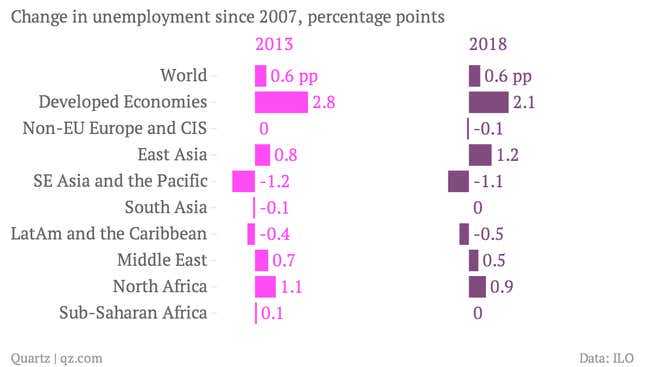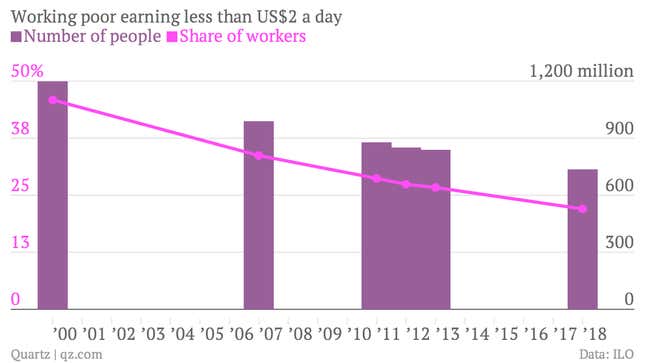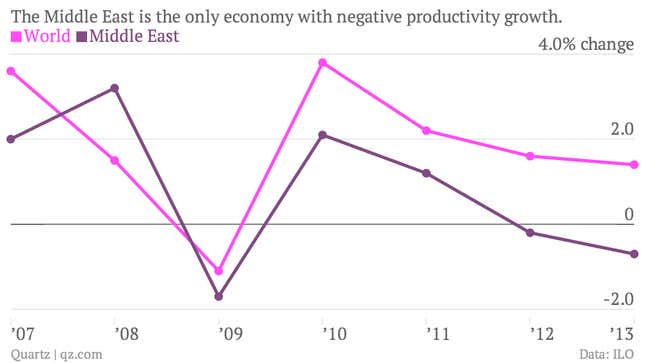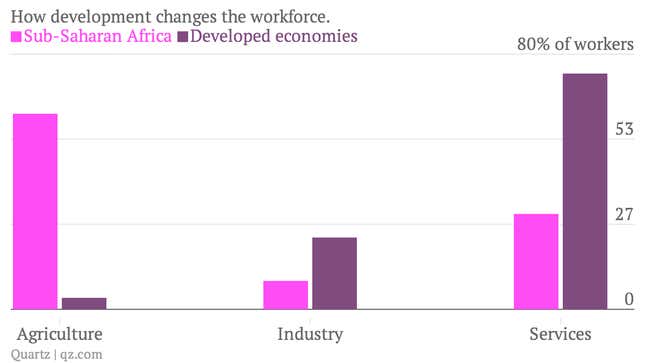New data from the International Labor Organization’s 2014 World Employment Outlook doesn’t exactly paint a pretty picture of the global labor market.
The permanent (?) unemployment problem
When it comes to jobs, the world has still not recovered from the global financial crisis, nor is it about to. Unemployment is higher today than it was in 2007—and the same will still be true in another five years. Developed economies see the highest increases in unemployment, while South-East Asia and the Pacific, along with Latin America and the Caribbean, are forecast to reduce joblessness the most.

But extreme poverty is still falling

Thanks to growth in emerging-market economies, both the proportion and actual number of people surviving below the commonly-accepted measure of global poverty—$2 a day in 2005 dollars—are falling. Five years from now, fewer than one in four people will be below it. But that line is still a far cry from what most residents of developed economy would consider an acceptable standard of living.
The weird labor economy of the Middle East
In the Middle East, wars, revolutions and a reliance on the oil industry have created a very strange labor economy indeed. The region’s youth unemployment (28.3% in 2013) is well known and watched nervously. In a tragic irony, education in these countries actually increases the risk of joblessness; over-education and skills mismatch are rampant in the region.
Civil strife in Egypt and a civil war in Syria have taken people out of the jobs market in those countries, while a million Syrian refugees in Lebanon have overwhelmed its job market and reversed recent gains in poverty reduction. Above it all hangs oil: The Middle East actually had the highest output per worker in the world in 2012, some $42,117. The only way that happens in a country with high unemployment is the enormous resource wealth found there. Nonetheless, it’s the only region in the report where productivity per worker is dropping:

Six in ten people in sub-Saharan Africa are growing food
If you want to understand the difference between a developed and an undeveloped economy, here’s your chart. It compares the share of workers in agriculture and industry in the wealthiest economic region and the poorest. And though things are improving, by 2018, Liberia and Madagascar are forecast to vie for the title of poorest country in the world.

